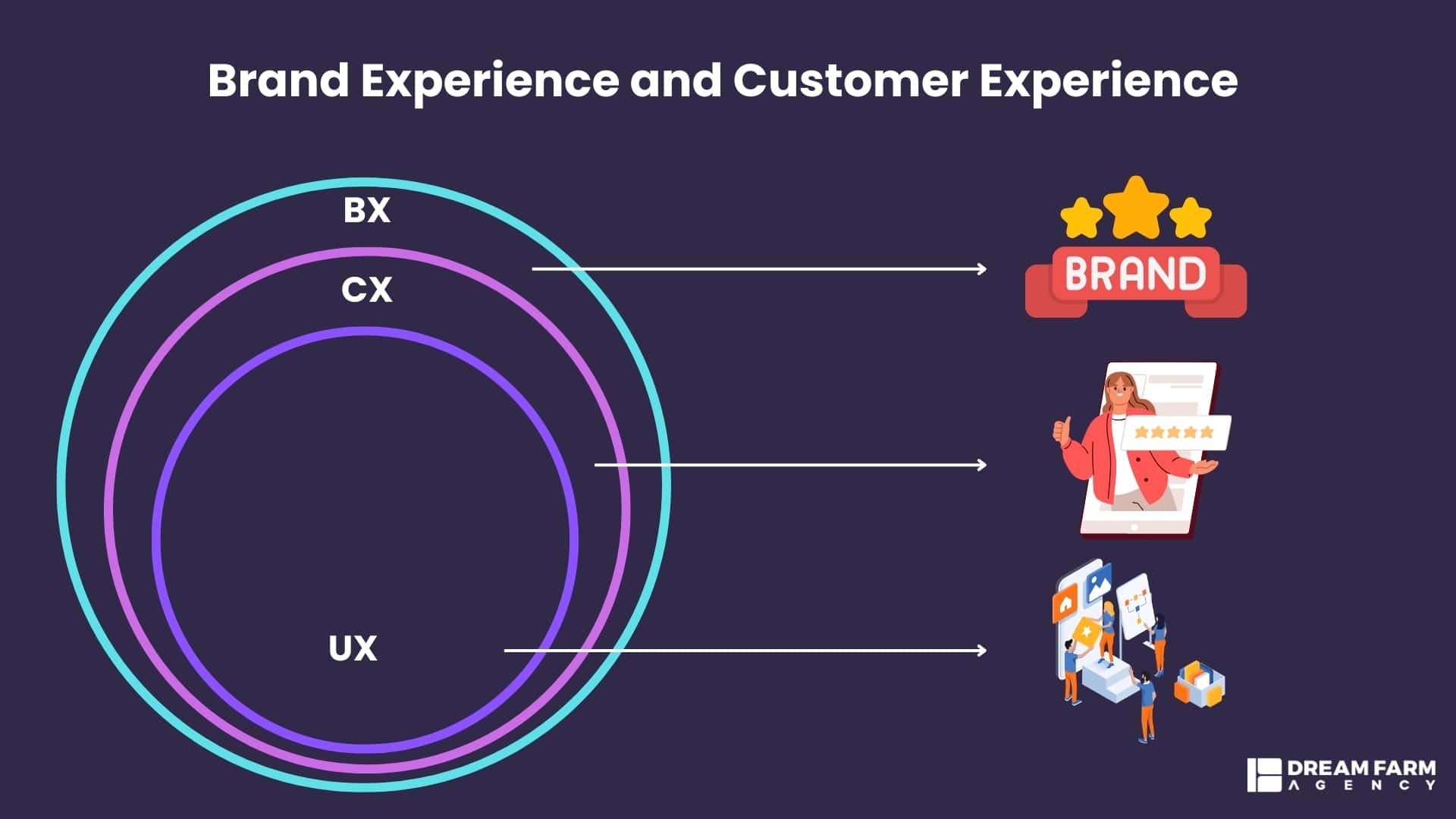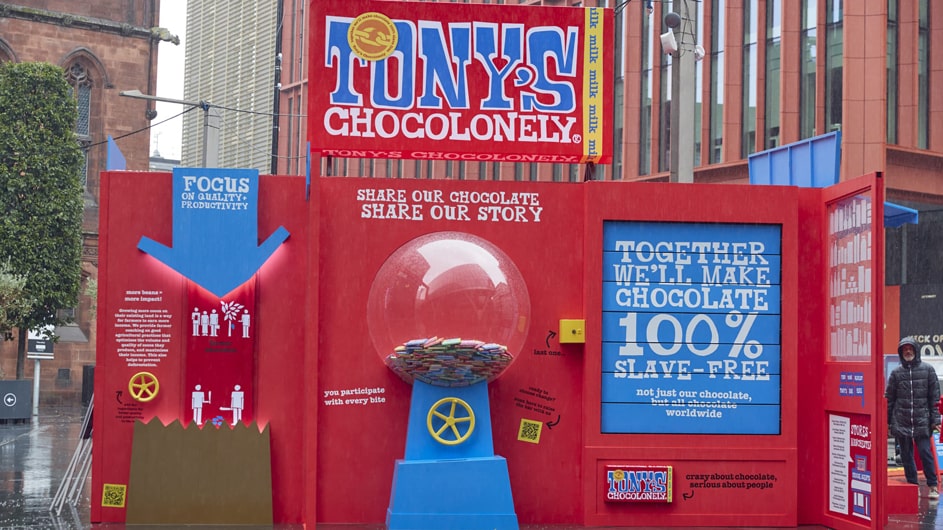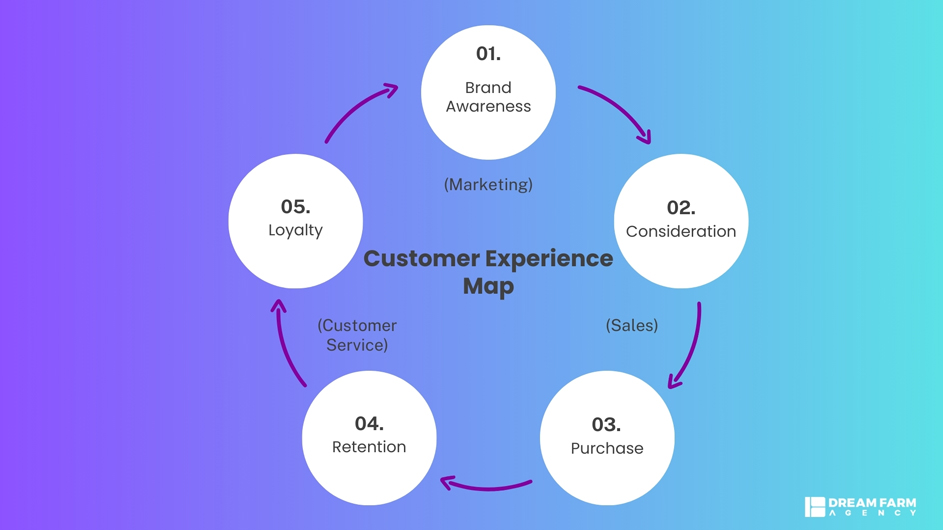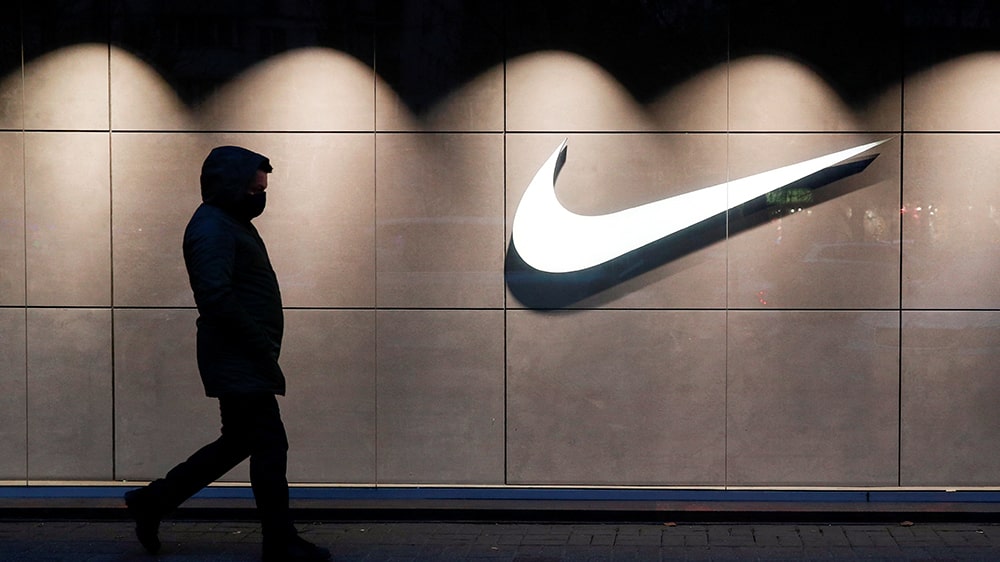
The global market is overflowing with choices, making it challenging for brands to stand out. With customers having limited attention, brands have to find ways to be unique. That’s where branded customer experience comes in.
While brands have to work hard to keep customers interested, some focus on giving good service and quality products and forget about the brand – the one thing that makes customer experiences different.
When they overlook the brand and the purpose behind it, they miss the chance to make a distinctive experience for customers. So, this article provides the intricacies you need to design your branded customer experience better.
What Is Branded Customer Experience?

Branded customer experience aims to create an exceptional, complete, and memorable journey for the customer. It starts from when they first discover the brand, all the way through buying, and even after they’ve made a purchase.
However, the emphasis is not focused on products and services. Branded customer experience differs from regular customer service, often dealing with problems. Instead, it is about making sure every interaction reflects what the brand stands for – its values, personality, and promises.
Suppose your strategies revolve around meeting essential customer needs without considering how your brand can shape the overall experience. In that case, you miss out on designing a customer journey that distinguishes you from competitors.
While striving for excellence is essential, it’s not enough to stand out. What drives customer loyalty, repeat business, and referrals is a customer experience that meets expectations and embodies your brand’s distinct personality and values.
Therefore, branded customer experience is about creating an experience reflecting your brand’s unique identity at every touchpoint. Customers with experiences that resonate with your brand become satisfied buyers and enthusiastic advocates who spread the word about your business.
You may wonder what brand experience is and what differentiates it from branded customer experience. A key point to remember is that brand experience is not limited to just customers; even people who haven’t bought anything from the brand can still have a brand experience. While brand experience is broader and encompasses everyone, branded customer experience zooms in on the customer’s journey and interactions.
To effectively create a branded customer experience, it’s essential to consider success examples and practical tips to get practical insights.
Banded Customer Experience Success Examples
Understanding examples of branded customer experiences is crucial for brands to gain valuable insights and enhance their own customer interactions.
HelloFresh
HelloFresh distinguished itself with a unique branded customer experience, maintaining consistency across all channels to establish lasting customer trust.

The meal kit service focused on making cooking easy and teaching customers. Their recipes were simple, they had helpful videos on their website, and their packaging had ingredient details. This, along with their convenience and quality, made customers stick with them.
Campaigns like “Taste of the World” and “Chef’s Table” introduced customers to new foods and famous chefs. People loved the tasty meals, fresh ingredients, and the whole experience HelloFresh offered.
Disney
Disney is renowned for its exceptional experiences across theme parks, resorts, and entertainment platforms. Every detail is meticulously designed to elicit a sense of magic and wonder from the instant visitors step into a Disney park to interact with characters and attractions.
They welcome millions of visitors annually, many returning due to their exceptional experience. Disney’s approach involves creating immersive experiences and paying attention to every detail, including the design of trash cans.
They involve every employee in delivering happiness, emphasizing problem-solving and creativity. Personalization is critical, with Disney treating every guest like a VIP by collecting data and tailoring interactions.
Tony Chocolonely
Tony Chocolonely’s branded customer experience stands out for its commitment to combating modern slavery in the cocoa industry. They make this mission clear through their packaging and marketing, raising awareness and promoting ethical consumption.

With initiatives like ‘Choose Agents’, they engage customers in understanding their power to drive change with every chocolate purchase. Through interactive experiences, they showcase their 5 sourcing principles, emphasizing fair cocoa bean purchasing and supporting farmers for long-term benefits.
By sharing their story through chocolate, Tony Chocolonely aims to make 100% slave-free cocoa the industry standard, encouraging more people to choose their products and join the movement towards ethical chocolate consumption.
Amazon
Amazon is renowned for its hyper-personalized customer experience, setting a benchmark for other brands. Their mission to be the most customer-centric company is evident in their approach to meeting B2C and B2B expectations.

They prioritize fast and satisfying customer service, reflecting a commitment to exceed customer needs. Amazon’s dedication to product availability and quick shipping has raised the bar for customer expectations in both consumer and business settings.
Amazon’s ability to tailor shopping experiences based on individual preferences showcases its expertise in understanding and engaging customers.
Like mobile commerce platforms, leveraging technology enables brands to create seamless and personalized experiences across all channels, akin to Amazon’s approach.
Examining various examples, such as Tony Chocolonely’s fight against slavery or Disney’s immersive experiences, and practical hints are crucial for gaining insights into successful branded customer experiences.
Effective Branded Customer Experience Tips
Creating a branded customer experience requires dedication, strategic thinking, and a profound connection to your brand’s identity. With careful planning and a clear vision of your brand’s values and personality, you can prepare for this transformative endeavor. Below, you can find hints and tips to guide you throughout the process.
Design a Branded Customer Experience Map
Designing a branded customer experience map is like creating a roadmap that guides your business toward delivering unique customer interactions. These maps provide a visual representation of the customer journey. It enables brands to identify pain points and areas for improvement.
Branded customer experience maps must be based on thorough customer research to reflect the customer’s perspective rather than business processes accurately. You get insights into customer interaction with products and services by breaking down activities into phases and listing relevant channels or touchpoints.

Branded customer experience maps are invaluable for businesses as they offer a holistic view of the customer journey across multiple channels. They highlight pain points and difficulties faced by customers while also identifying areas of success.
Brands can also involve stakeholders from various business areas in discussions around the customer experience map. They can shape conversations and collaboration in a way that would enhance customer satisfaction. Exploring various brand experience examples and crafting your customer experience map is beneficial.
Key components to include in these maps are customer profiles, phases of the journey, pain points, positive experiences, channels, touchpoints, customer goals, and additional customer data like Net Promoter Score and customer quotes, which enrich the understanding of the customer experience.
The Net Promoter Score (NPS) is a simple yet powerful customer loyalty and satisfaction metric. Customers are asked to indicate their likelihood of recommending the product or service to others by selecting a rating on a scale from 0 to 10.
Customer experience quotes are insightful sayings or expressions underlining the importance of delivering unique customer service. These quotes often include the mindset and values necessary for creating memorable and positive customer interactions.
Through meticulous design and collaboration, businesses can use these maps to drive improvements and deliver memorable branded experiences.
Define Your Brand’s Visual Identity
Brand’s visual identity speaks volumes without saying a word. It’s the art of translating your mission, vision, and unique traits into visual elements that captivate and resonate with your audience. Taking the time to get it right and aligning every visual aspect with your brand message is important for making a lasting impression.
One of the most iconic visual elements of any brand is its logo. Just think about the Nike swoosh or the red target sign of Target – they’re instantly recognizable symbols that evoke strong emotions and associations.

Creating a logo that catches customers’ attention and conveys your brand’s message takes careful planning. It’s a process that may seem simple but requires strategic thinking and attention to detail.
Another integral component of visual branding is the color palette. Consistency is key here. Using the same colors across all your branding materials helps to establish brand recognition and evoke specific emotions in your audience. Whether you opt for bold, vibrant hues or subtle and muted tones, your chosen colors should mirror your brand’s personality and values.
Typography can also set the tone for your brand’s voice. From classic serif fonts to modern sans-serif styles, the fonts you select can convey a wide range of moods and impressions.
Imagery is another powerful tool for shaping your brand’s visual identity. Whether it’s photographs, illustrations, or graphics, the images you choose echo the character of your brand. High-quality, professional-looking imagery can help to create a positive first impression and engage your audience on a deeper level.
Finally, layout and design are necessary in how your brand is perceived. A well-designed layout can enhance the effectiveness of your visual branding by creating a seamless and intuitive experience for your audience. Whether it’s a website, social media post, or print advertisement, every element should harmonize to convey your brand’s message and values.
A solid visual identity helps differentiate a brand from its competitors and reinforces its message. For instance, bold colors and modern typography may convey a sense of innovation and creativity, while muted tones and classic fonts may evoke a feeling of elegance and tradition.
By paying attention to every detail, from typography to imagery to layout, you can create a brand identity that leaves a long-term impression and sets you apart from the competition.
Create a Consistent Brand Voice
Developing a distinctive brand voice is essential for expressing your company’s character across all communication channels. Your brand voice should present your brand’s identity, regulating what you say and how you say it.
It’s like the DNA of your company’s messaging, reflecting its values and mission. With a well-defined brand voice, you can cut through the market’s noise and leave a lasting impression on your audience.
Ensuring consistency in your brand voice is essential for creating credibility and building trust in your audience. Whether on social media, email communications, or packaging, your brand should sound the same across all platforms.
According to a study by Lucidpress in cooperation with Demand Metric, maintaining brand consistency can significantly impact a company’s bottom line. Organizations that consistently present their brand experience a 23% increase in revenue. It suggests that when customers encounter a brand that looks and feels the same wherever they go, they are likelier to trust and engage with it.
Meanwhile, you should consider your company’s mission, values, and target audience. Start by aligning your voice with your brand’s core values, using them as a guide for your messaging.
Understanding your audience’s preferences and needs can help you adjust your voice to resonate with them effectively. Analyzing your best-performing content can also provide valuable insights into the voice that resonates most with your audience, allowing you to modify and enhance your brand voice over time.
Personalize the Customer Experience
Customers expect personalized interactions based on their individual needs and preferences. McKinsey’s research discovered that companies proficient at personalization techniques make 40 percent more revenue compared to those with average performance.
One key benefit of personalization is its ability to differentiate a brand in a competitive market. With personalized experiences, businesses can create unique interactions that competitors find challenging to replicate. This uniqueness gives you a competitive edge and helps you stand out in customers’ minds.
For example, Amazon’s use of technology and algorithms for personalized recommendations reflects its brand culture of innovation and customer obsession.
By analyzing vast data, Amazon anticipates customer needs and delivers tailored shopping experiences, strengthening its brand identity and fostering customer loyalty.
Moreover, personalized recommendations, offers, and communications drive customer satisfaction. When customers feel recognized and valued, they’re more likely to return to a brand for more purchases.
Integrating technology and creativity, such as interactive media, brings life into your branded customer experience. In the metaverse, individuals can explore digital spaces, attend virtual events, and engage with branded content in a highly personalized manner.
Immersive and interactive technologies, like Virtual Reality (VR) and Augmented Reality (AR), allow customers to visualize products, try different options, and make informed purchasing decisions.
Merging these technologies into your customer experience strategies provides customers with immersive and personalized interactions that enhance engagement and foster stronger connections with their audience.
However, implementing effective personalization strategies comes with its challenges. Companies must overcome data management, analytics, and technology integration obstacles.
Gather and Use Customer Feedback
Gathering feedback is fundamental for businesses committed to understanding and meeting customer needs. Customer feedback includes various input forms, including insights, opinions, preferences, and complaints about products or services.
It can be collected through surveys, reviews, community forums, social media, and support interactions. Each offers unique advantages in gathering specific types of feedback, understanding customer sentiments, identifying pain points, or gauging satisfaction levels.
Understanding the importance of customer feedback lies in its ability to offer valuable insights into customer experiences. It allows brands to make informed decisions that enhance product or service and improve customer satisfaction.
A crucial aspect of gathering feedback is establishing a customer feedback loop, a strategy to continuously improve products or services based on user opinions, suggestions, and reviews.
Implementing a Voice of the Customer (VoC) program is a cornerstone for managing customer feedback, incorporating data from sources like surveys, satisfaction scores, and community forums.
By actively listening to the customers, businesses can stay aligned with customer expectations and drive continuous improvement in their products and services. In other words, when businesses act on customer feedback, they can develop a culture of continuous improvement and ensure alignment with customer expectations.
In other words, continuous development and homogeneity are critical for branded customer experience strategies to ensure consistency and effectiveness.
Culture Shapes Your Efforts
Consumer and brand culture play a significant role in shaping the integrity of branded customer experiences. Brands are not solely owned by marketers or producers but belong to consumers who engage with them.
The meaning and significance of a brand lie within the realm of consumer interpretation, with consumers having the unique authority to assign value and concepts.
From this point of view, brands are vital components of consumer culture, where they signify cultural values and serve as vehicles for social interaction.
Consumers select brands based on their cultural significance in today’s consumer-centric landscape. Brands hold value only to the extent that they carry meaning and significance that resonate with consumers.
For example, Airbnb has revolutionized the travel industry by integrating cultural immersion into its branded customer experience. It enables travelers to discover and book accommodations that reflect their destination’s local culture and lifestyle through its platform.

The company’s emphasis on diversity and inclusivity, as well as its support for sustainable tourism practices, reinforces its commitment to cultural integration and community engagement.
Consumers shape the discourse surrounding brands and determine their cultural viability. Producers may seek to influence brand meanings, but ultimately, consumers play the leading role.
Through brand consumption, consumers reveal their identities and establish relationships with others, utilizing brands as tools for effective social interaction.
By understanding and using the power of consumer culture, brands can foster stronger connections with their audience and ensure the integrity of their branded customer experiences.
So, the injection of culture into the customer journey ensures authenticity and fosters meaningful connections with customers. Ultimately, brands can differentiate themselves in the competitive landscape and cultivate meaningful brand experiences.
We Are Dedicated to Providing Comprehensive Solutions
With our innovative solutions, we can help bring your branded customer experience to life in ways that engage and delight your audience.
If you want to enhance your branded customer experience strategy with cultural and technological influences, we have the tools and expertise to transform your vision into reality.
Our team experts are committed to understanding your brand identity and crafting solutions that resonate with your target market. Don’t settle for the ordinary! Contact us and boost your brand experience with Dream Farm Agency.

Fareena



